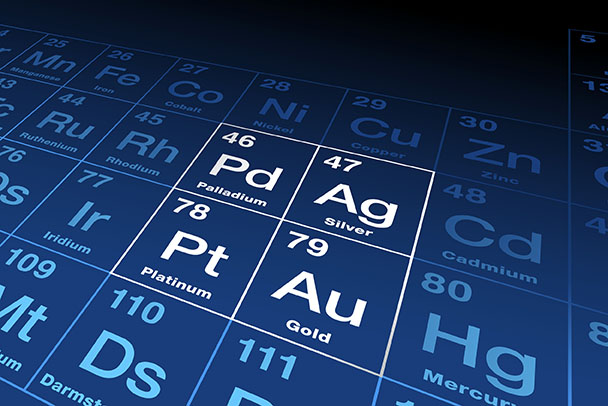
< Back
silver
Definition
Silver is a chemical element with the symbol Ag and atomic number 47. It is a soft, white, lustrous transition metal that is chemically similar to copper and gold. Silver has the highest electrical conductivity of any metal, making it a valuable commodity in electronics. It is also a good conductor of heat and is used in mirrors and other reflective surfaces.
Silver is found in nature as a free element, but it is more commonly found as a compound in ores. The largest producers of silver in the world are Mexico, Peru, and China.
Silver has a long history of use for jewellery and coins. It is also used in a variety of industrial applications, including photography, electronics, and medicine.
Silver is a precious metal, and it has been valued for its beauty and rarity for centuries. It is also a very versatile metal with a wide range of uses.
How can the word be used?
The coins are made of silver.

Different forms of the word
Noun:
- a white, lustrous, metallic element with the symbol Ag and atomic number 47. It is a precious metal that is used in jewellery, coins, and other objects.
Adjective:
- made of or resembling silver.
Etymology
The word "silver" comes from the Old English word "seolfor", which also means "silver".
The first recorded use of the word "silver" in English was in the 8th century.
The word "silver" is an Old English word, and it is related to the German word "Silber" and the Dutch word "zilver".
Question
Where is silver mined?
AQA Science Exam Question and Answer
Question:
Describe the properties of silver and its various applications, highlighting its conductivity and use in jewellery, photography, and antibacterial agents.
Answer:
Silver possesses distinct properties that contribute to its diverse applications. It is an excellent conductor of electricity and heat, making it vital in electrical circuits and electronics. Its reflective quality is utilised in mirrors and solar panels.
In jewellery, silver's lustrous appearance and malleability make it a popular choice. It is also utilised in photography, where silver halide crystals capture images upon exposure to light.
Another noteworthy application is silver's antibacterial properties. Silver ions interfere with bacterial cell membranes, impeding their growth. This property finds use in medical equipment, wound dressings, and water purification.
Furthermore, silver compounds have been employed for their medicinal effects. Silver sulfadiazine, for instance, is used to prevent infection in burn wounds.
However, it's worth noting that while silver is valuable, its extraction and use can have environmental impacts. Its antimicrobial properties, when released into the environment, might affect aquatic ecosystems.